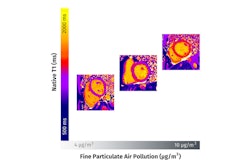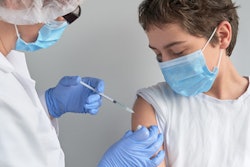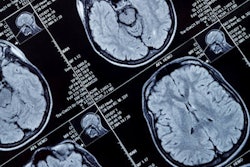
Cardiac MRI improves the detection of both clinical and subclinical COVID-19-induced myocarditis in college athletes by more than sevenfold compared with a screening strategy based solely on COVID-19 symptoms, according to a study published May 27 in JAMA Cardiology.
The findings highlight the powerful role cardiac MRI can play in this population, wrote a team led by Dr. Curt Daniels of Ohio State University in Columbus.
"These unique cardiac MRI data give us a more complete understanding of the prevalence of clinical and subclinical myocarditis in college athletes recovering from symptomatic and asymptomatic COVID-19 infections," the researchers wrote.
Since the COVID-19 pandemic began in 2020, researchers, universities, and coaches have expressed concerns about heart damage in college athletes who have tested positive for COVID-19 and how to best assess their fitness to return to play, the group noted. Studies have estimated the prevalence of myocarditis and myocardial inflammation in this population as ranging between 0% and 15% -- which suggests the need for effective protocols to evaluate whether athletes who have recovered from the disease have sustained heart damage.
In fact, in September of last year, the Big Ten Conference mandated testing for athletes who contracted COVID-19 before returning to play via electrocardiogram, serum troponin levels, or cardiac MRI, or a combination of these.
In the new study, Daniels' group sought to investigate the prevalence of myocarditis in athletes who tested positive via reverse transcription polymerase chain reaction testing (RT-PCR) for COVID-19 and compare screening strategies for allowing them to return to play. The study included data on athletes who tested positive for the disease between March and December 2020 from the Big Ten COVID-19 Cardiac Registry; the researchers tracked cardiac symptoms and testing in those who were found to have myocarditis.
The study included 1,597 athletes representing 13 universities and 17 types of sports who underwent cardiovascular testing. Of these, 37 (2.3%) were diagnosed with COVID-19-induced myocarditis; nine had clinical myocarditis and 28 had subclinical.
The researchers found that if myocarditis screening had been based on symptoms alone, only five athletes (0.31%) would have been identified as having the condition, while cardiac MRI produced a 7.4-fold increase in detection, both for clinical and subclinical disease (0.31% to 2.3%).
Put another way, including cardiac MRI (CMR) in the return to play protocol offers reassurance that myocardial injury isn't present if the imaging findings are normal, according to the researchers.
"CMR imaging is highly sensitive for identifying myocardial inflammation and in our study was able to exclude significant disease and allow safe return to play in 97.7% of athletes after cardiac screening," they wrote.
The fog regarding how to best assess athletes post-COVID-19 is beginning to clear, wrote Dr. James Udelson of Tufts Medical Center in Boston in an editorial that accompanied the study.
"[This] data provides us with substantially more information to inform our thinking about screening and return to play than even just six months ago," he wrote. "We can be reasonably certain that the prevalence of signs on cardiac MR imaging of myocarditis ... is in the range of 1% to 3% in athletes following positive COVID-19 test results. Screening only on the basis of COVID-19 symptoms is insensitive."



.fFmgij6Hin.png?auto=compress%2Cformat&fit=crop&h=100&q=70&w=100)





.fFmgij6Hin.png?auto=compress%2Cformat&fit=crop&h=167&q=70&w=250)











